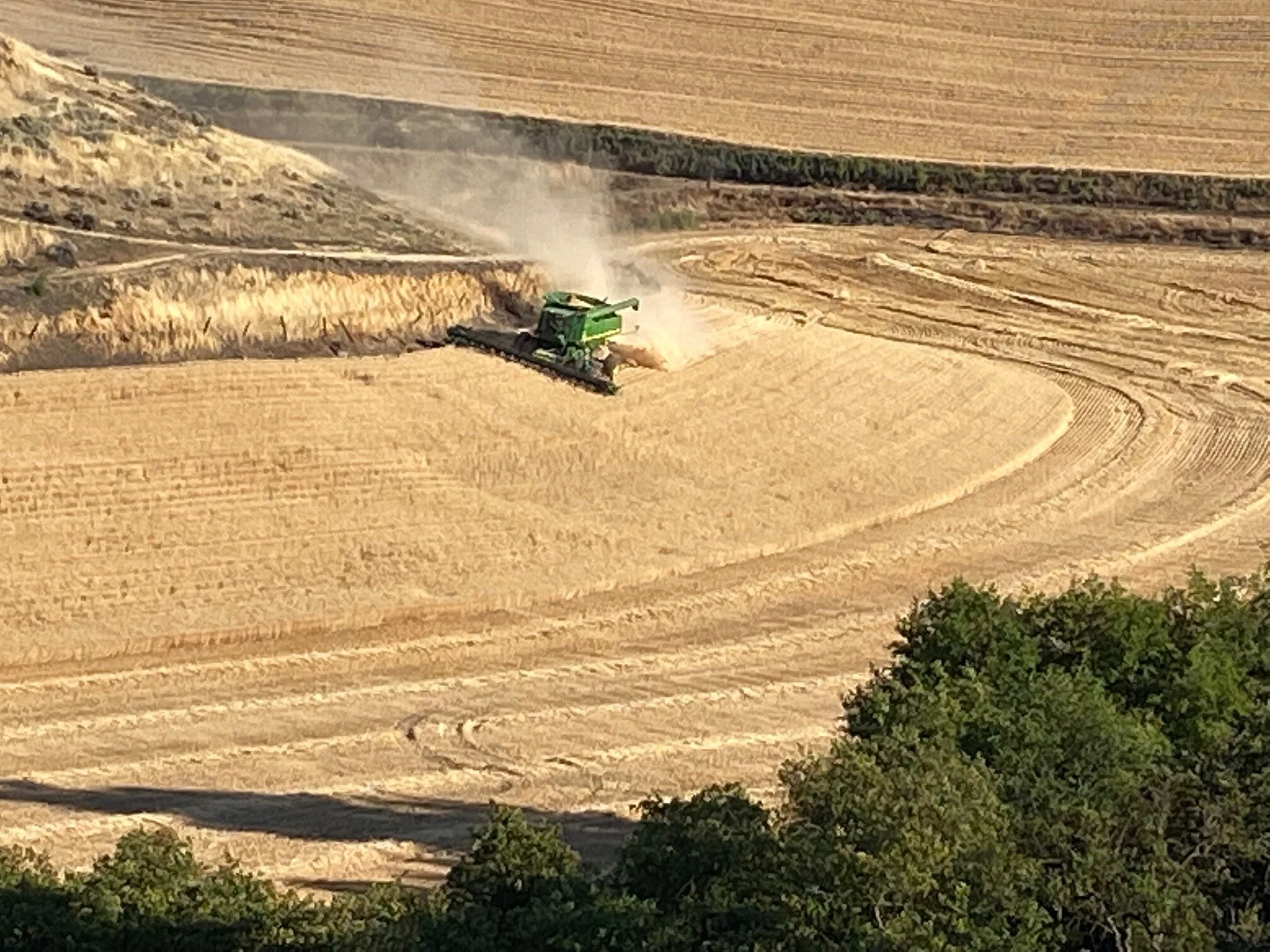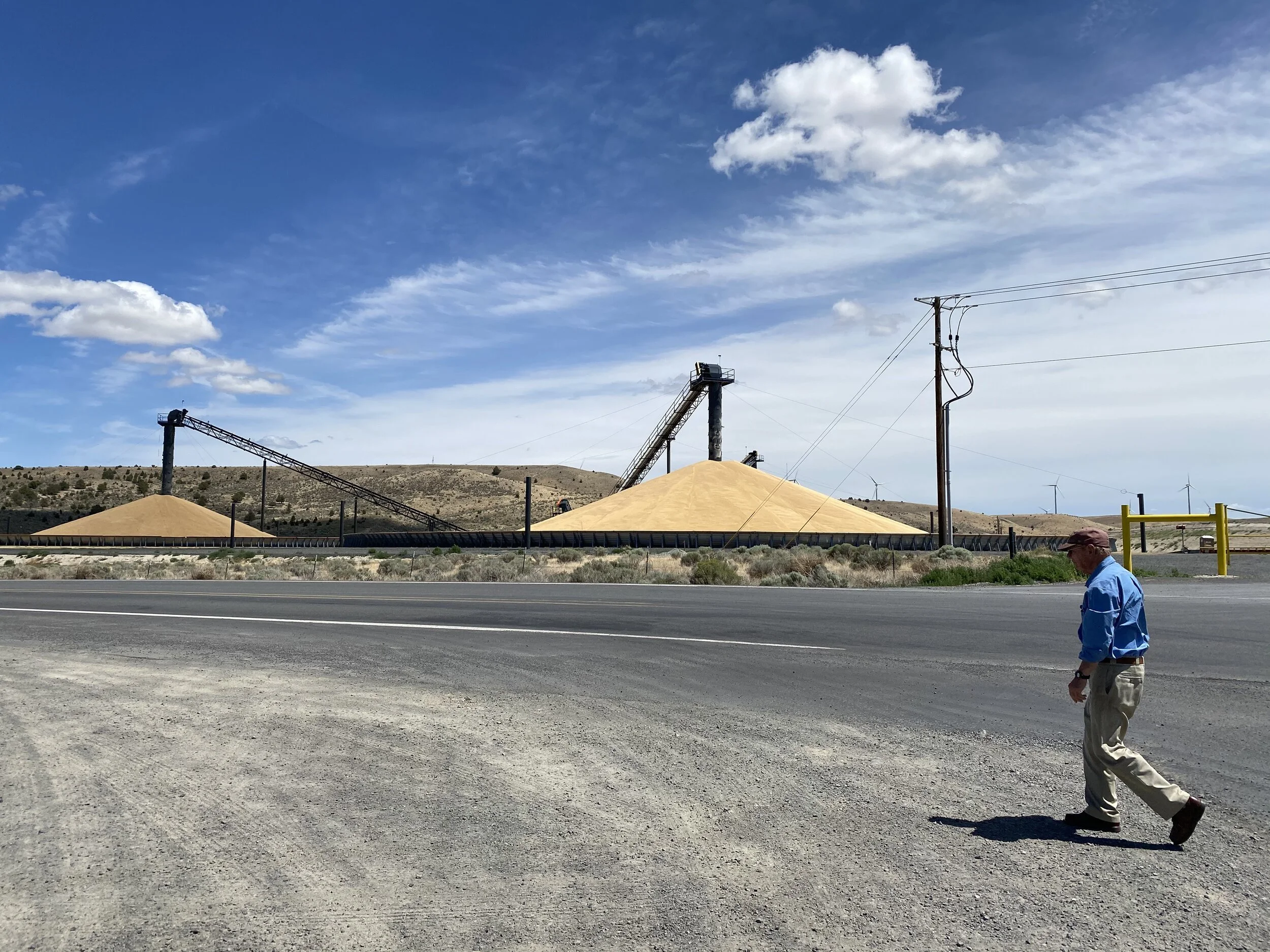Congress to pay farmers as wheat and barley prices tanked
File Photo - Operators at the Kortge Wheat and Cattle Co. on property at the end of Lambert Lane just outside The Dalles cut a nice stand starting on July 13, 2020.
From the Oregon Wheat Growers League with intro by Tom Peterson:
The Dalles, Ore., Jan. 7, 2025 — With soft white wheat prices stuck at around $6 per bushels, farmers are feeling tighter than a drought-cured kernel as they budget for the upcoming spring and harvest seasons.
Those prices are down from highs of $11 and $8 a bushel in the last several years.
With elevated operating costs for parts, chemicals, insurance, fuel and labor, local wheat growers were hoping that prices would jump above $7.50 a bushel to make their endeavors above break-even.
It has not happened as prices have stalled with world production high and exports to other countries low.
Prices have been muted for the past 18 months.
The US Congress is now stepping in with additional payments of up to $30 per acre for last year’s ground that was in production. Payments are expected to be made in coming months.
Mid Columbia Producers are pile wheat south of Arlington at Cedar Springs. Coops can pile millions of bushels on the ground in years when inexpensive storage is needed and yields are large.
From Oregon Wheat Growers League:
American Relief Act Provides Temporary Farm Economic Assistance
On December 21, Congress passed the American Relief Act of 2025, avoiding a government shutdown and extending funding levels until March 15, 2025.
The bill also included a natural disaster aid and $10 billion in market relief for farmers. Without the security of a new Farm Bill, the League supported an economic assistance package to bridge the gap and issued an action alert to activate grower voices.
File Photo - Joe Rietmann is typically one of the earliest to start soft white wheat harvest in our region. H was cutting this field near Ione in early July, 2020. Donna, his wife, is pulling the bankout wagon.
The market relief payments are estimates, so ranges have varied. As calculated by the Food and Agricultural Policy Research Institute (FAPRI) and the Rural & Farm Finance Policy Analysis Center, they indicate a projected $30.69 per acre for wheat and $21.76 for barley. Find more using the American Relief Act of 2025 Economic Assistance Calculators at here. The economic assistance consists of per-acre payments, paid on 2024 planted and 50% of prevent-planted acres.
While the legislation also includes a one-year farm bill extension, it does not replace a long-term bill, which will remain a top priority for growers in 2025.



